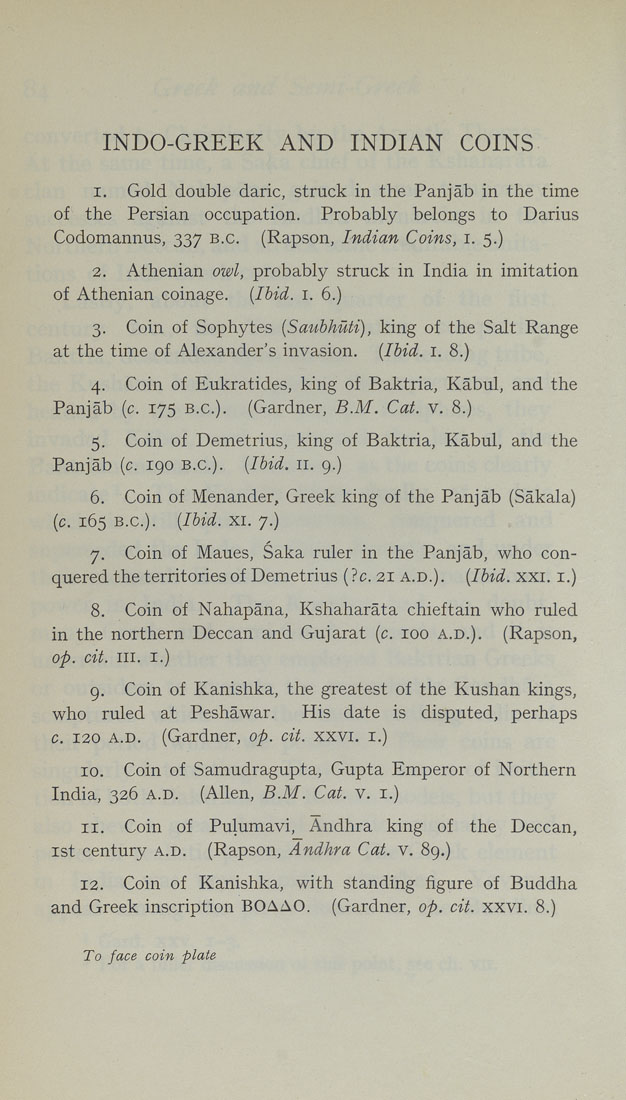INDO-GREEK AND INDIAN COINS
1. Gold double daric, struck in the Panjab in the time
of the Persian occupation. Probably belongs to Darius
Codomannus, 337 B.C. (Rapson, Indian Coins, i. 5.)
2. Athenian owl, probably struck in India in imitation
of Athenian coinage. {Ibid. 1. 6.)
3. Coin of Sophytes {Sauhhuti), king of the Salt Range
at the time of Alexander's invasion. {Ibid. 1. 8.)
4. Coin of Eukratides, king of Baktria, Kabul, and the
Panjab {c. 175 B.C.). (Gardner, B.M. Cat. v. 8.)
5. Coin of Demetrius, king of Baktria, Kabul, and the
Panjab (c. 190 b.c). {Ibid. 11. 9.)
6. Coin of Menander, Greek king of the Panjab (Sakala)
(c. 165 B.C.). {Ibid. XI. 7.)
7. Coin of Maues, Saka ruler in the Panjab, who con¬
quered the territories of Demetrius (?c. 21 a.d.). {Ibid. xxi. i.)
8. Coin of Nahapana, Kshaharata chieftain who ruled
in the northern Deccan and Gujarat {c. 100 a.d.). (Rapson,
op. cit. III. I.)
9. Coin of Kanishka, the greatest of the Kushan kings,
who ruled at Peshawar. His date is disputed, perhaps
c. 120 A.D. (Gardner, op. cit. xxvi. i.)
10. Coin of Samudragupta, Gupta Emperor of Northern
India, 326 a.d. (Allen, B.M. Cat. v. i.)
11. Coin of Pulumavi, Andhra king of the Deccan,
ist century a.d. (Rapson, Andhra Cat. v. 89.)
12. Coin of Kanishka, with standing figure of Buddha
and Greek inscription BOAAO. (Gardner, op. cit. xxvi. 8.)
To face coin plate
|








